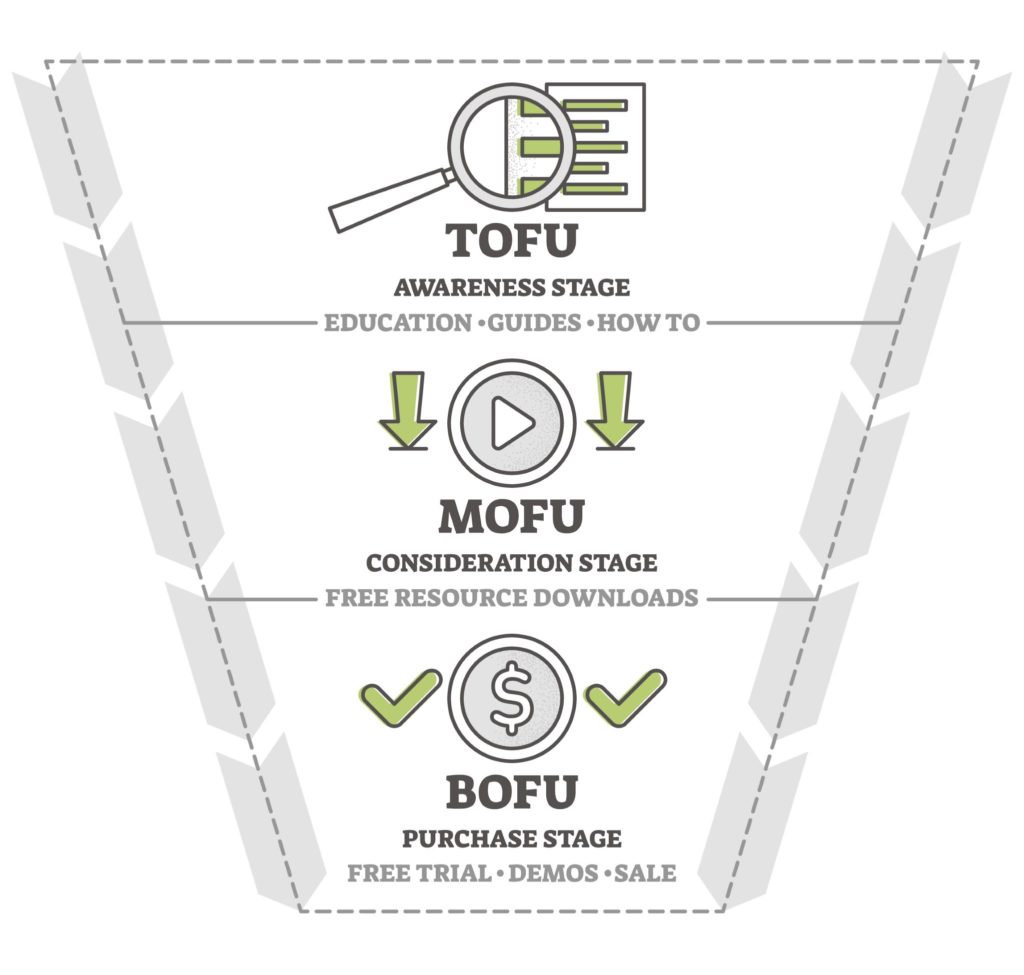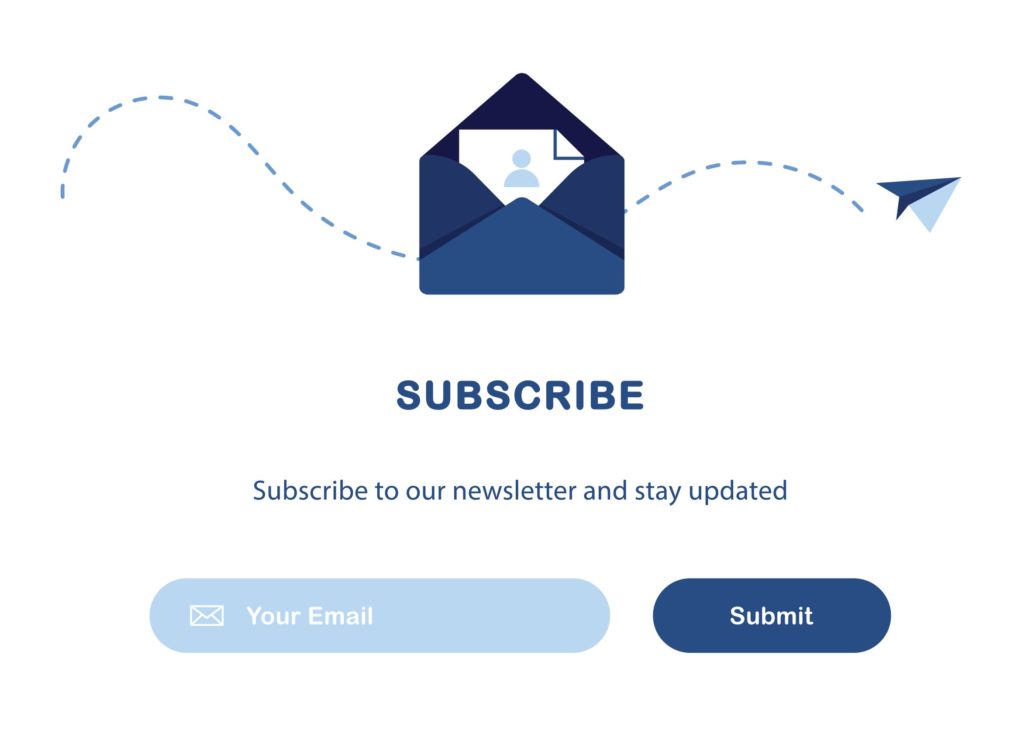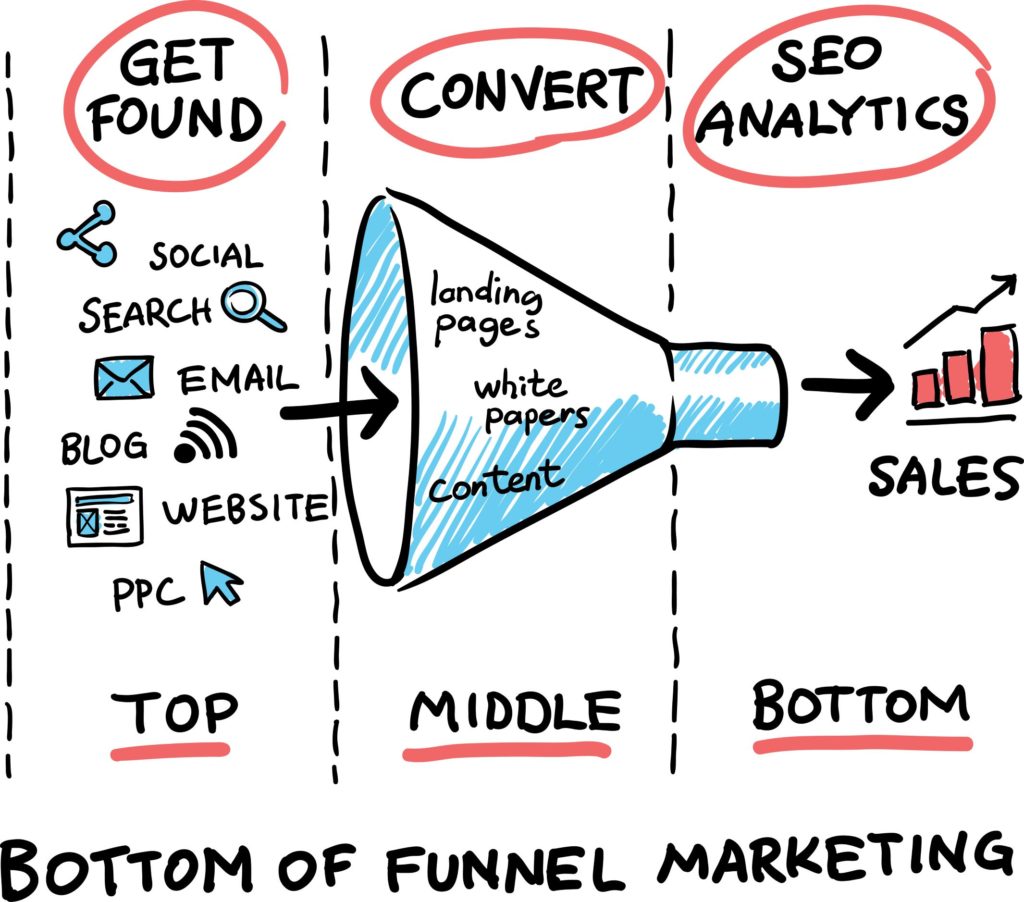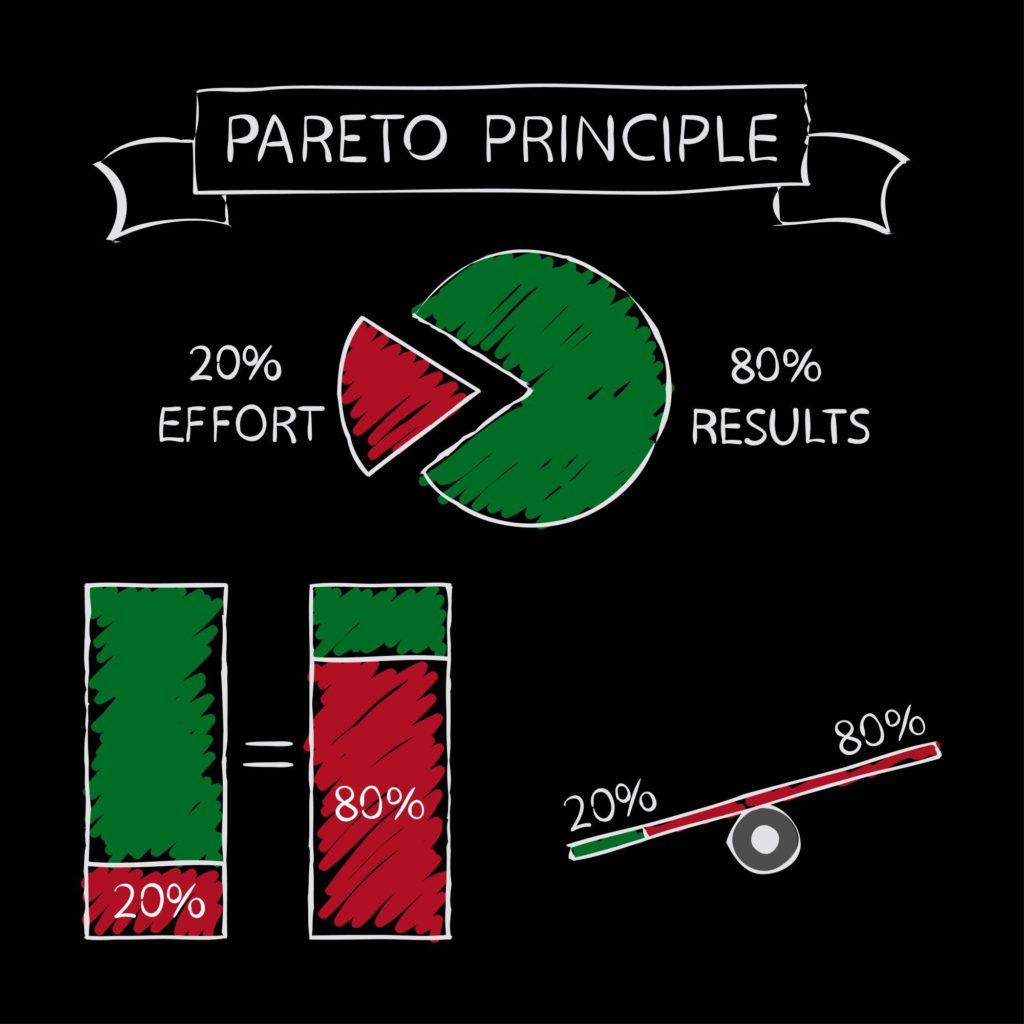
If you have a business, you need a process in place to gain leads… then turn those leads into customers… and get them excited to become repeat customers. Now, this is where having a well-thought-out marketing funnel comes in handy. It connects the dots between your marketing strategy and lead generation. It also helps you imagine what prospects are going through at each stage, and how you can guide them to becoming customers.
Of course, your funnel should depend on how you build relationships with your target audience and what marketing strategy you use. You also need to have a solid market positioning.
In this article, you’ll know each aspect of a marketing funnel and how your business can grow by utilizing it.
Benefits of Using a Marketing Funnel
Before we discuss the parts of the funnel, here are some of the benefits a funnel can give you…
- Helps you visualize the customer journey
- Increases sales through personalized nurturing of leads
- Automates your process – saves time and effort
- Increases brand awareness and trust
- Improves your email marketing
- Allows you to retarget your leads
 Top of the Funnel (TOFU)
Top of the Funnel (TOFU)
At this stage, consumers are usually looking for answers. They’re trying to find information through various channels that would help them solve the problems they are experiencing.
And they may encounter your brand through multiple channels such as social media, blogs, forums, advertising, email marketing, etc.
Here’s where you decide which channel you want to use as the primary vehicle so people may know who you are, find your content, discover your site, and go to your landing page.
It’s also important to note that this is where consumers are most skeptical about you. So keep that in mind when you’re setting up your TOFU. You must break down that barrier or they won’t even go further down the funnel.
Your TOFU is where your people will have their initial impression of you. Make it easy for them to “slide down”.
How to let your target audience find you
Think about your ideal customers. What are they looking for? What are their needs? And how can you help them?
Your business must have the solutions they need. Once you can provide that, it’s a matter of you appearing in their line of sight. This means choosing the right marketing channel(s).
Here are some channels you can use:
- Blogs
- Social Media Updates
- Infographics
- Images
- E-Books
- Audio Podcasts
- Video Podcasts
- Newsletters
After doing some research and learning about the channels you’ll use, it’s important that you remain consistent in providing valuable content. Because that’s how you’ll acquire leads.
Think about it. The more content you have, the more online presence you build. And the better your online presence is, the more leads you’ll get. The more leads you have, the more opportunities you get to convert them into prospects (and eventually turn them into customers).
(To know more about online advertising, click here.)
 Once you have quality content available, it’s time to promote your business.
Once you have quality content available, it’s time to promote your business.
According to research, over 70% of website visitors will not make a decision (purchase) the first time they visit a website. And that’s okay. What you want is for them to build their “micro-commitments” to you.
Make them say yes to your value-rich content repeatedly. This creates trust. Because remember, the very first time they see your brand, their skepticism about you is at its highest. You need to break that down little by little.
So you earn their trust by giving them what they need. And in return, if what you’re providing is truly valuable, they’ll engage with you. They’ll drop a comment here and there. They’ll share your content.
And because of these little yeses to you, it becomes easier for them to slide down the funnel.
Here’s an example…
TransBiz helps manufacturers build their brands and sell their products around the world through e-commerce platforms. We educate our prospects through our blog articles on the website to show our expertise. At the same time, we also have social media pages (Facebook, Instagram, YouTube) to expand our reach. This is how our prospects learn more about us. And more importantly, it’s how they learn more about e-commerce. So even if some prospects never become our clients, they know they can always go to our website or our social media pages to expand their knowledge in scaling their business online.
Doing this builds brand awareness, and overall, it gets us more leads. (You’re here, aren’t you? 😉 You get the point. )
Middle of the Funnel (MOFU)
At this stage, you have attracted prospects to your website. But whether they will successfully convert depends on how you guide them to take further action. Some experts believe this is the most critical part of the marketing funnel.
In this process, your prospects must have understood the problems they are currently encountering and what solutions are available in order to make the best decision.
So you have to show them how they can find the best solution with your help.
Don’t over-promote. People hate feeling like you just want to take their money. Remember that people don’t care how much you know until they know how much you care. So take it easy. You’re here to help them. Focus on them. Increase their trust in you by educating them.
Now it’s time to take your relationship with them a little further. At this stage, you can ask them to leave their name and email address (via an opt-in or subscription form). Here, we give prospects free content to get them to fill out their information and opt in to future marketing.
We call this type of content a Lead Magnet. (They’re like magnets… that attract leads. Get it?)
 But wait!
But wait!
“What the damn hell do you need my email address for?” someone might ask.
It is indeed pretty hard for someone to give away their email address. It’s like their ID. And they have suspicions you might spam them with cat videos or worse… an email filled with virus links.
They don’t know how you do your email marketing (yet), so they don’t know what they’re going to get from you. Mostly, they’re likely being pessimistic about it.
Unless…
You give them something to be excited about.
More value!
In the form of…
- Educational Resources
- Useful Resources
- Software Download
- Discount/Coupon
- Quiz/Survey
- Webinar/Events
This is where you’re giving them tons of value (again). But this time, there’s an exchange — their name and email address. But you don’t need to overthink this. Just ask if what you’re giving them is worth their name and email address.
Of course, you have to look at it from their point of view.
Is it what they truly want and need? Because you might be offering a free webinar that took you a lot of time and effort to do. But if they don’t care about it then… they won’t hand you their email address.
On the contrary… let’s say you’ve been providing valuable content in the form of articles for a year now. You can gather all the best bits of your articles and create an Ultimate Guide PDF and offer it in exchange for their email address.
You see, there’s not a lot of effort involved here. But if it’s what your prospects need, then you will skyrocket your opt-in conversion rate.
(Going a step further… if your content is incredibly valuable, you could even charge money for it.)
All right. Let’s say you’re able to get their email address. Now what? Does your prospect immediately slide down to the bottom of the funnel and become a customer?
It’s ideal. But it isn’t necessarily the case most of the time. And that’s okay.
Why? Because you possess their email address. That’s why.
With that information, you can get in touch with your prospects more often. You can extend your marketing via email.
And if you do it right, you engage their top-of-mind awareness. It means you’re the first brand that comes to mind whenever they think of a particular subject (that’s related to your business).
With email marketing, you can continuously provide more value to your prospects long after they’re done visiting your website. Doing this keeps them enticed or even excited about what you can do for them. And in return, you’re getting little yeses from them here and there.
If we’re being honest here, it’s really a form of seduction to get them back into the funnel. And let them slide to the bottom and convert them into customers. All while thinking about their wants and needs and continuously providing value.
Here’s something that might interest you (if you haven’t noticed it yet)…
Think about your favorite blogs.
Every time you read an article, do you see a subscription form asking for your email address?
Something like…
“Join our newsletter.”
 If yes, then now you know the purpose of it. They’re doing it to stay in contact with you. If you like their content, then you can get more simply by subscribing to their email list.
If yes, then now you know the purpose of it. They’re doing it to stay in contact with you. If you like their content, then you can get more simply by subscribing to their email list.
You can also use discounts to bribe your prospects to subscribe to your newsletter. Say you’re selling products on your website. You could tell your prospects… “Don’t miss out on our seasonal discounts. Subscribe now and we’ll let you know when we have great deals for you. (We won’t spam. Ever.)” Something like that.
Now you see how useful MOFU is. You don’t have to expect your prospects to slide all the way down to the bottom of the funnel on the first try. But with MOFU, you can bring them back into the funnel and continue the process until you convert them into customers.
Bottom of the Funnel (BOFU)
At the bottom of the funnel, people are usually ready to make a decision.
Consumers at this stage often only need a small push to take action. So you must convey why you are their only or best choice. (And why they shouldn’t buy from your competitors.)
Here are some calls-to-action that can enhance your BOFU:
- Demo/Free Trial
- Customer Story
- Comparison/Spec Sheet
- Webinar/Event
- Mini-Class
Ironically, you’ll see a bunch of websites filled with calls-to-action but no “education” as part of their content. This is a problem because their prospects don’t go through the process of slowly trusting the brand. If the trust level doesn’t increase, the conversion rate doesn’t increase (for the most part).
Imagine this… it’s your first time on someone’s website. They have a claim that they can help you solve your business problems with their “magic pill” coaching. And it only costs $497. Annnnndd… that’s it. No education. No other valuable information for you to look at. Take it or leave it.
It would be a hard sell, right?
Okay, but let’s say you see they have proof and testimonials. Maybe you’ll think about buying their coaching service. But you’re still not sold.
And it’s not just you. It’s the same way every time a prospect lands on their website. And if they’re getting 1,000s of leads per day, they’re all getting the same experience. The landing page isn’t converting well and everyone is wasting their time.

Now, imagine if the website has TONS of free courses ranging from the very basic aspects of running a business to the most complex problems businesses face. AND you don’t even need to give up your email address to access those contents.
They’re just there. FREE.
Why? Because the contents that require you to give your email address are more advanced than their free courses.
That’s a lot of value you can use without spending a dime.
Now you’re trusting them more and more.
And just by applying the methods you see on their website, you see an increase in profits and your business is running like a well-oiled machine.
But because your business is growing, you start to encounter new problems. As they say, “More money, more problems.”
So you go to your trusted website again and see if they have the solution to your new problems. But you see a ton of free content and you don’t know where to begin and you just want to get it over with.
Fortunately for you, because you followed your trusted website’s advice, you have a lot of extra money. And you can buy their “magic pill” coaching service that’s just perfect for your business right now.
And because you’ve experienced it first hand, you trust them. Therefore, you’re confident in their expertise and you gladly pay their fee with your hard-earned money.
But wait! There’s more…
You see they’re offering a FREE strategy call for your business. Because they’ve included it in the bottom part of their funnel. It’s like their demo version of their “magic pill” coaching service. Before you even invest money, you already feel like a lottery winner. And you almost feel guilty for taking so much value from them without giving anything back.
And after the free strategy call, you’re super confident that their “magic pill” coaching service will pay you back 10 times over. So your initial resistance is gone. It’s an easy purchase. A no-brainer.
Look at that. Having you (the prospect) go through the funnel makes all the difference, right?
Remember this…
Every time you spend your money, it’s because there’s some level of trust that you will gain from that transaction. If you don’t have that trust, it’s hard for you to part with your hard-earned money.
It’s the same with your marketing funnel. You can’t just shove your prospects down to the bottom of the funnel and ask for the sale. You’ve got to let them slide on their own. (Nobody likes being forced, right?) So make sure it’s a slippery slide from the top to the bottom of the funnel.
Test, Evaluate, and Optimize Your Marketing Funnel
To create the best marketing funnel for your business, you need to regularly test and evaluate its effectiveness. Find the weakest link and try tweaking it and see how your audience responds. Run split tests and keep adjusting until you maximize all aspects of your funnel.
With these tests, you should gather enough data to justify the changes you make. Typically, 30 days is enough to give you an idea whether your funnel is running at an optimal level. You likely won’t have the perfect funnel at the beginning. So run it for a bit and find where the friction happens and solve it as soon as you identify it.
For example…
If you find that most of your website traffic comes from Facebook and Instagram, then you may want to put a little more budget on social media. But if the traffic from social media has a very low conversion rate, then look at your data and see if you’re getting qualified leads. On the contrary, if you’re getting great conversions from your email marketing’s traffic, then put your focus there.
Apply the Pareto Principle (80/20 Rule)
This principle states that for many outcomes, roughly 80% of consequences come from 20% of the causes (the “vital few”). This means not all of your marketing channels are equal. There’s a “vital few” that will bring in the majority of traffic, conversions, and sales.
Focus on the few that are responsible for most your business’s success. Doing this not only frees up your time, but also redirects your energy onto what significantly expands your business..
Build a Slippery Marketing Funnel
In summary, having a (slippery) marketing funnel is an integral part of scaling your business (and boosting your revenue).
Yes, with a great product and compelling copy, you can still rack up sizable sales numbers. That won’t help you build a long-lasting relationship with your customers or grow your business.
Before you create any kind of content, remember to keep your customers and your marketing funnel in mind. This will help you increase your conversion rate.
If you need help developing an effective marketing funnel, click here.



